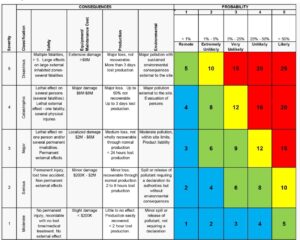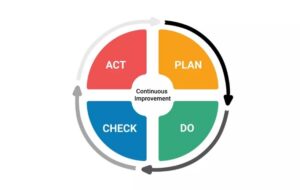Turnarounds (TAs) are challenging events for operating plants. Continuous processes usually run non-stop, leaving few opportunities for routine maintenance on critical equipment, especially if entire systems need to be isolated before any maintenance work can be done. The combination of cyclical repairs, equipment inspections, product changeover, and capital projects greatly impact a company’s bottom line. Although temporarily taking a plant or production unit out of service to optimize overall productivity may be inconvenient, it is a necessary measure to maintain continuity and optimal productivity. These overly complex events require significant capital expenditure and, since any plant downtime means a loss of revenue, there is a strong incentive to stay on schedule.
Executing a perfect TA is an extraordinarily challenging task, involving managing the scope, process, planning, scheduling, and many other factors that all impact a turnaround’s cost and duration. Therefore, turnaround optimization (TO) is the only way for a company to successfully handle all the event’s components and prevent serious financial setbacks. This post outlines a TO plan to help management in minimizing expenditures, conducting a TA event with the leanest maintenance possible, and returning to maximum production as quickly as possible.
Step 1: Create the TA-Team
The optimization program begins with forming a specifically designated TA-team that consists of stakeholders from every relevant department. The team’s first task is to conduct an analysis to identify the work necessary during the turnaround and define project goals. Because this group of workers include a variety of professions, it is better equipped to choose the best option from a wide pool of opinions and viewpoints. Since it is also responsible for developing the scope and framework for the turnaround timetable, the group’s diverse experience is a crucial factor that helps it move towards success.
Considering work performed during a TA costs three to four times as much as work performed during regular operating times, each item proposed for the TA-scope must be challenged and debated among the team members. Only necessary improvements, capital projects, and tasks essential to keep the plant operating efficiently should be included. A tight scope is especially important at this stage because the backlog will certainly expand during the shutdown – 90 percent of outages have a scope creep between 10 and 15 percent. These uncontrollable additions grow the project’s overall goal and should be avoided because they threaten to knock other essential tasks off the ticket so the project can stay on schedule. Ultimately, increasing the scope negatively affects operational performance once the equipment is returned to service.
The TA-team should use prioritization tools such as a criticality matrix (See Figure 1) to graphically rank tasks by importance, which avoids scope creep by rigorously evaluating which tasks deserve to be part of the exclusive TA-scope. To use the matrix, members of the TA-team need to follow a thoroughly explained, agreed-upon assessment standard. In this example, a task ranked 15 or higher is classified as most critical, with those scoring 5 to 9 slightly less important and lower levels considered secondary work. Proper scope management has a 20 to 25 percent benefit to overall turnaround success. Once the TA-team has prioritized the work, it creates an organized maintenance activity timetable.

Figure 1. Criticality matrix
Step 2: Implement
Developing the scope is essentially strategic planning, but it only provides a rough overview of what needs to be implemented and does not delve into the particulars. The next step for the TA-team is to determine each specific maintenance activity in a detailed timetable. By using agreed-upon site planning standards, the team should create a step-by-step approach using the best execution estimates to complete the work list and stay true to upcoming budget and duration targets.
Once the plan is in place, managers delegate the tasks to the appropriate team members. This can be overwhelming if not handled properly because of the complex nature of turnarounds; The targets and milestones are likely extensive. Management should assign team members responsibilities in accordance with their personal levels of expertise, knowledge, skills, and experience. All TA-participants, especially managers and supervisors, should develop certain levels of accountability. Involving all team members in all aspects of the TA-process helps everyone understand their roles, responsibilities, and develop their skills to better handle these inevitably reoccurring, albeit infrequent, projects. Filling the appropriate positions with the right employees is crucial for the turnaround coordinators – who oversee the planning and execution of maintenance activities for each operational unit – to manage the flow of work.
As the project moves forward and resources are mobilized and managed throughout the planning and execution process, all activities should be monitored to confirm they meet efficiency and environmental requirements. Gathering sufficient strategic data is a crucial step to address risk and make the best possible decisions to maximize the potential for success. The TA team should provide exact records on the project’s development by using key performance indicators (KPIs) that specifically track front-end loading (FEL) activity. Tracking and recording these FEL procedures also aid in pre-project planning the next time around. With the help of these metrics, decision makers can better control project performance and focus on areas that may need improvement. In addition to this data, the TA-team should organize a daily team meeting to report progress and act as a value-added communication platform between departments.
It is important to remember that a TA is not complete when the work packages are finished, but when the plant is back online. However, after all the adaptations the event, the plant’s startup procedure needs to be reviewed a final time. Any work performed on equipment not originally included in the scope could have altered the recommission plan. To finish TA execution, the operations and process engineering departments will need to review, revise and assess the risk of the startup procedure to prevent injury, spills and damage to equipment.

Figure 2. PDCA cycle
Step 3: Reflect
In the final step in the TA optimization program, after the plant is successfully back online, the TA-team must reflect on what has (not) been done well and record it to improve the next shutdown. Make a habit of planning, executing, reflecting, improving and planning again for all maintenance activities, as highlighted in the PDCA cycle (see Figure 2). This ritual is not exclusive to individual tasks but also applies to a site’s overall periodic shutdown routine. Discussing the data helps the team get the full picture of how the project turned out and identify ways to implement continuous improvement measures. For such reflection meetings, companies may find inviting a facilitator from outside the organization can help control the flow of information and prevent finger-pointing.
Summary
Even though a TA may be executed safely, efficiently, and on schedule, an opportunity to optimize turnaround disciplines and practices always exists. Tasks can be coordinated better, delays mitigated, the schedule adhered to, and improved progress reporting Accuracy. By developing an effective process to help facilitate the shift from oversight to driving performance, managers can enforce proactivity, increase performance, and have successful TAs with short- and long-term benefits.
Turnarounds in operating plants are complex, involving continuous processes and significantly impact a company’s bottom line. In order to systemically optimize a turnaround, it is important to:
1. Create the (T)A-Team:
- Form a designated TA team with stakeholders from relevant departments.
- Analyze and identify necessary work during the turnaround, defining project goals.
- Scrutinize proposed items for the TA-scope to include only essential tasks.
- Utilize prioritization tools, like the criticality matrix, to manage scope effectively.
2. Implement:
- Develop a detailed maintenance activity timetable based on site planning standards.
- Delegate tasks to team members according to their expertise, knowledge, and skills.
- Monitor all activities to ensure efficiency and environmental requirements are met.
- Use key performance indicators (KPIs) for tracking front-end loading (FEL) activity.
3. Reflect
- Reflect on the turnaround post-completion to identify areas of improvement.
- Embrace the Deming cycle: plan, execute, reflect, improve, and plan again.
- Encourage a continuous improvement mindset for both individual tasks and overall shutdown routines.
- Consider inviting an external facilitator for post-turnaround reflection meetings to maintain objectivity.
In conclusion, optimizing turnarounds goes beyond executing tasks efficiently; it involves strategic planning, meticulous execution, constant monitoring, and a commitment to continuous improvement for both short- and long-term benefits.




